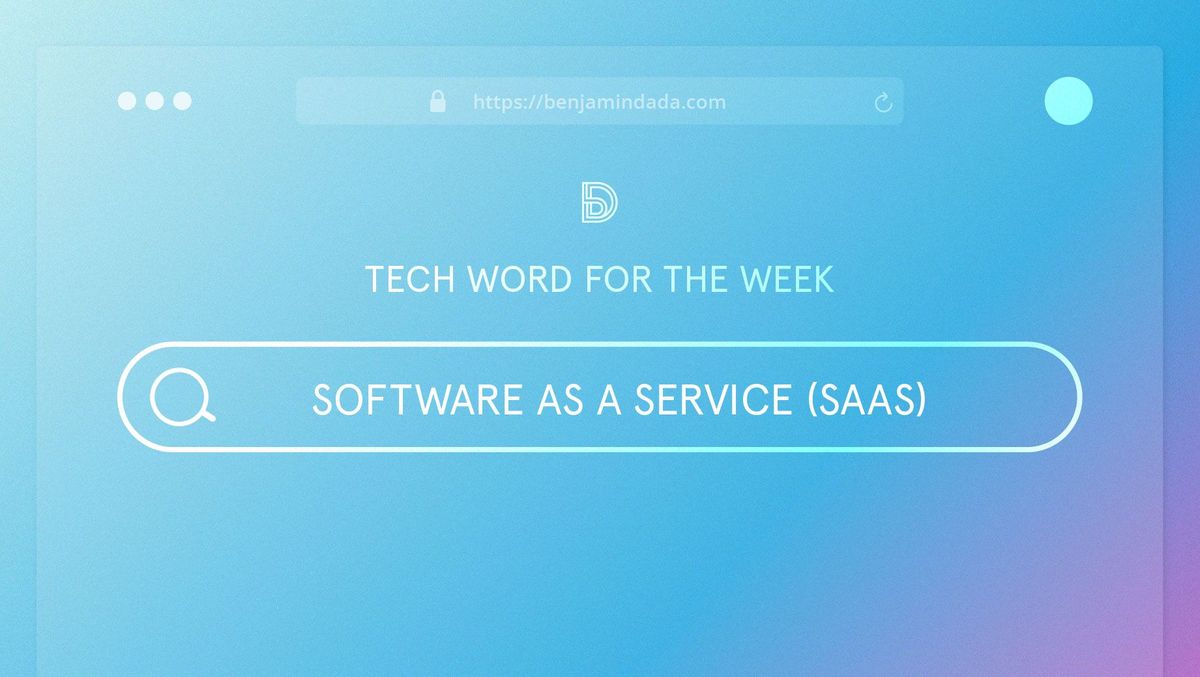Tech Word for The Week: Software As A Service
Rather than always having to carry a compact disk around, you pay software providers a monthly subscription to maintain and provide automatic software updates for you through an internet-based software delivery model.

Tech Word for The Week is a weekly series where we look to explain commonly used words in the tech ecosystem in a simple, engaging way.
Technology is one of the biggest drivers of innovation. Few years ago, the process of installing software on a PC was different from how it is done now. The cost of upgrading software for providers and users has drastically reduced compared to previous years.
Imagine what it would have cost an organisation with over a 1000 staff to update a new software in the early 2000s. They have to purchase a compact disk that contains the software updates and download it to each staff member’s system.
Nowadays, the process is so much easier. In this week’s edition of Tech Word for The Week, we will examine what Software as a Service is. Let’s dive in.
Since the introduction of Software as a Service and cloud-based computing, all you have to do today is access the software upgrade through a web browser. Rather than always having to carry a compact disk around, you pay software providers a monthly subscription to maintain and provide automatic software updates for you through an internet-based software delivery model.
What is Software as a Service? Software as a Service is a cloud-based software licensing model where the provider creates and maintains the cloud application software and every other underlying IT infrastructure for the users. The service is provided on a subscription basis.
Using SaaS absorbs users from having to worry about technical software and hardware management, periodic software updates (through compact disks) , security and other infrastructural maintenance responsibilities. All they have to do is access the software through the internet after logging in through their password or pin.
Servers are located and managed externally as users do not need to update any software. This significantly reduces installation and implementation costs. The SaaS favour organisations who deliver services such as human resource software, finance, content management systems, customer relationship management tools, supply-chain, sales, marketing, and procurement services.
The Evolution of SaaS
Grace Hopper is recognised as one of the earliest inventors of software. While working with the US Navy as far back as 1952, she created the first software compiler for the AO programming language.
The software could be written once and transferred from the main computer to other computers. When asked why she created the unconventional compiler, she replied that she was lazy and didn't want to keep doing the same thing over again. The idea was further developed by IBM and it became the norm.
In 1976, Bill Gates wrote a letter to the hobbyist group lashing them for copying the software he and Paul Allen created without their permission. To solve this problem, they created the software licenses. Microsoft used this model for selling software that worked on personal computers.
The softwares made by other vendors was paid for and this became the norm. Software licenses created security for creators so they could get adequate compensation for their efforts. It also introduced yearly contract subscription and compliance services.
In 1994, (the period of the dot com bubble), Netscape Navigator shared the secure sockets layer (SSL) protocol. This allowed encrypted transmission of data over the internet. Simply put, clients could shop online without the fear of losing their data or personal information. This led to the introduction of online marketplaces which Amazon now dominates.
Also, the late 1990s heralded the introduction of modern software corporations. In a phone conversation Larry Ellison (of Oracle), Evan Goldberg (Netsuite) and Marc Benioff (Salesforce) spoke about how the internet was gaining popularity and how it would impact business software.
Business insider magazine highlights this discussion as the invention of cloud computing and the SaaS business model. Evan went on to found Netsuite and Marc Benioff started Salesforce. Software as a service has kept on evolving ever since.
Key Characteristics of SaaS
- It’s a cloud based software. The simplest model of cloud computing.
- Hosted and delivered online.
- Does not require periodic download or installations.
- Offers security, compliance and maintenance as part of the cost. A full package.
- Easy to set up. Rapid deployment in hours rather than weeks or months.
Examples of Saas include Configure, Flexisaf, Infuiss, Releaf, Kobo360, E-tranzact, SeamlessHR, OkadaBooks, Chekkit, Fieldinsight, etc.






